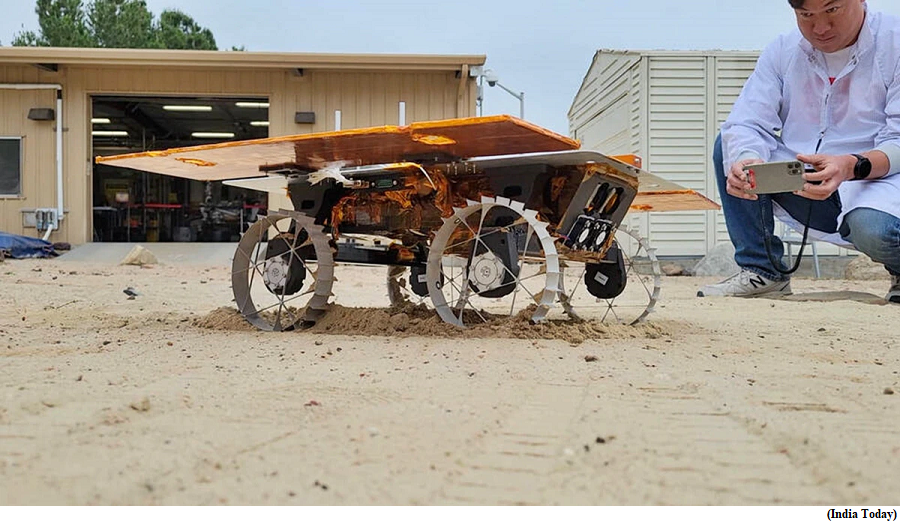Author Nandini Das wins 2023 British Academy Book Prize (Miscellaneous)

Why in news?
- Indian-born author Nandini Das has been named the winner of the 2023 British Academy Book Prize for Global Cultural Understanding.
Why she has been chosen?
- She got awarded for her book ‘Courting India: England, Mughal India and the Origins of Empire’.
- As a Professor in the English faculty at the University of Oxford, she has sought to present a new perspective on the origins of empire through the story of the arrival of the first English ambassador in India, Sir Thomas Roe, in the early 17th century.
About British Academy Book Prize:
- The British Academy Book Prize, formerly known as the Nayef Al-Rodhan Prize, was established in 2013 to reward and celebrate the best works of non-fiction that demonstrate rigour.
- It is a leading international non-fiction award with a prize money of £25,000.
UPSC tightens rules for appointment of State police chiefs
(GS Paper 2, Polity and Constitution)
Why in news?
- Only police officers with at least six months of service left before retirement will be considered for appointment as the Director-General of Police (DGP) of a State, the Union Public Service Commission (UPSC) said in amended guidelines.
- The Empanelment Committee constituted by the UPSC will not assess Indian Police Service (IPS) officers on Central deputation for a State DGP’s post if the Union Ministry of Home Affairs (MHA) says that “it will not be possible to relieve the officers”.
- The amendments make explicit what have been considered unwritten norms, even as some States have appointed DGPs on the verge of retirement, and many States have appointed acting DGPs to avoid due process.

Key Highlights:
- The guidelines were revised to discourage States from appointing “favourite officers” about to retire, in a bid to extend their tenure.
- The guidelines also allow officers with 25 years of experience to be appointed as a DGP, against the earlier requirement of a minimum 30 years of service.
- The number of shortlisted officers cannot exceed three, but may consist of less than three officers in “exceptional circumstances”. Officers will not be included in the panel unless they themselves are willing.
Background:
- The amended UPSC guidelines come in the wake of several States, choosing to appoint acting DGPs instead of regular DGPs, bypassing the requirement to go through the UPSC-selected panel of eligible officers.
- States such as Uttar Pradesh, Punjab, Andhra Pradesh, and Telangana have all appointed “in-charge” DGPs, or DGPs with “full additional charge”. In fact, Uttar Pradesh has not had a full-time DGP since 2022.
- Former Punjab DGP V.K. Bhawra has moved the Central Administrative Tribunal against the appointment of Gaurav Yadav as acting DGP by the Aam Aadmi Party government in the northern State.
Chandrayaan 3 carried nuclear technology to Moon
(GS Paper 3, Science and Technology)
Context:
- Chandrayaan-3's Propulsion Module, which carried the Vikram lander and Pragyan rover to the Moon, is powered by nuclear technology.
- Two radioisotope heating units (RHU) that generate one watt of energy are onboard the module, which is currently orbiting the Moon.
- The functioning of this heating unit paves the way for future nuclear-based missions that last live longer on the Moon.

What is radioisotope heating unit?
- A Radioisotope Heating Unit (RHU) is a device that generates heat by harnessing energy produced from the radioactive decay of a specific isotope.
- The primary function of an RHU, when installed on a spacecraft, is to provide a reliable and long-lasting source of heat for various components and instruments on the craft to keep them warm in the coldness of space.
- It is particularly important for missions that operate in extremely cold environments, such as outer space or other celestial bodies, where traditional heating methods such as electrical heaters might not survive.
- The Propulsion Module orbiting the Moon has two such units that were installed for experimental and demonstration purposes. ISRO aims to build on its success now.
What is it made of?
- The RHU contains a radioactive isotope, commonly plutonium-238 (Pu-238) in the form of plutonium dioxide (PuO2). This isotope decays over time.
- The decay process is exothermic, meaning it releases heat energy as it decays and that amount is predictable.
- This heat is harnessed and used to maintain the temperature within the spacecraft or specific components, such as scientific instruments, fuel tanks, or critical electronics.
Why is it used?
- A big advantage of using a Radioisotope Heating Unit is that it gives a longer life to the mission. Plutonium-238, for example, has a half-life of about 87.7 years, which means it can provide a steady source of heat for many decades.
- Another advantage is that RHUs are highly reliable because they do not rely on moving parts or external power sources. This makes them ideal for unmanned missions that must endure harsh conditions over long periods.
RHU in other space programs:
- ISRO is not the first to make use of this nuclear-based technology. The Mars rovers, like Curiosity and Perseverance, have used RHUs to keep their critical components warm in the frigid Martian environment.
- The heat generated by these units not only ensures the proper functioning of onboard instruments and systems but also helps to extend the operational life of the spacecraft, enabling them to conduct valuable scientific research over many years.
- Meanwhile, these units have also been used in moving spacecraft like Voyager-1 and Voyager-2, which have been functioning for the last 50 decades and currently travelling in interstellar space, outside the Solar System.




